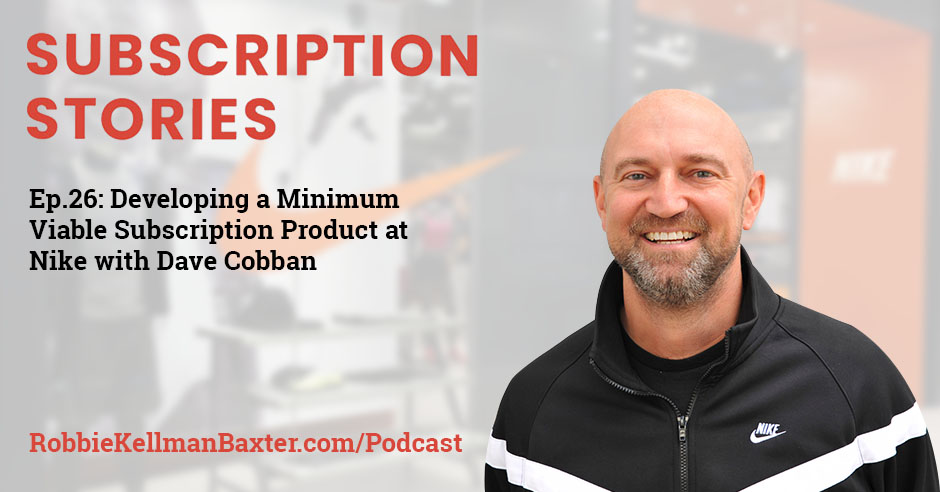 “If you can build a brand-loyal lover from a young age, you will reap the benefits of that for decades.” Dave Cobban, co-founder of Unbrkble, joins Robbie to share how he has been instrumental in developing what would become “Nike Adventure Club,” a shoe subscription for children. They talk about the challenge of introducing a subscription model inside a global brand.
“If you can build a brand-loyal lover from a young age, you will reap the benefits of that for decades.” Dave Cobban, co-founder of Unbrkble, joins Robbie to share how he has been instrumental in developing what would become “Nike Adventure Club,” a shoe subscription for children. They talk about the challenge of introducing a subscription model inside a global brand.
Launching something new is always tricky. It can be especially challenging be entrepreneurial inside a global brand like Nike. You want to align with the broader goals of the organization while also staying nimble and creative. When you’re also introducing subscription models into a transactionally oriented organization, the stakes are even higher.
Dave Cobban spent over 12 years at Nike, many working with the innovation team. A few years ago, as a result of his work as part of a team looking at driving exponential growth at Nike, Dave identified an opportunity for subscription commerce as a potential way to achieve several key Nike objectives. Dave incubated and developed what has come to be known as “Nike Adventure Club,” a shoe subscription for children.
Today, Dave is a co-founder of Unbrkble, an organization that helps start-ups and scaling businesses stay close to their customers as they launch and scale their own businesses.
In this interview, Dave and I talk about how to start small with your subscription offering while thinking big, incorporating sustainability into an eCommerce strategy, and best practices for defining your subscription MVP.
—
Listen to the podcast here:
Developing a Minimum Viable Subscription Product at Nike with Dave Cobban
Launching something new is always tricky. It can be especially challenging to be entrepreneurial inside a global brand like Nike. You want to align with the broader goals of the organization while also staying nimble and creative. When you’re introducing subscription models into a transactionally–oriented organization, the stakes are even higher. Dave Cobban spent over twelve years at Nike, working with the innovation team. A few years ago, as a result of his work as part of a team looking at driving exponential growth at Nike, Dave identified an opportunity for subscription commerce as a potential way to achieve several key objectives. He incubated and developed what has come to be known as the Nike Adventure Club, a shoe subscription for children. Dave is a co-founder of UNBRKBLE, an organization that helps startups and scaling businesses stay close to their customers as they launch and scale their businesses. In this interview, Dave and I talk about how to start small with your subscription offering while thinking big, incorporating sustainability into an eCommerce strategy, and best practices for defining and optimizing your membership MVP.
—
Welcome to the show, Dave.
Robbie, how are you doing? It’s good to be here. I’m looking forward to our conversation.
Me too. I wanted to start by asking you if you could take us back. What was Nike‘s initial goal that led you to develop what has come to be known as the Nike Adventure Club?
Back in 2015 at what’s called strategic planning kickoff, Mark Parker, who was then CEO of Nike, asked a question to his leadership team saying, “We’re going to be a $30 billion company in the next few years. How are we going to double that in the next ten?” That question, posed in a provocative way to the leadership team, made them start to think, “Is it going to be still selling shoes and shirts?” At that time, we went away and took a year to think about what the possibilities could be.
Having come from the sustainability world, which is where I started at Nike, I already had in my mind about this idea of subscription. It’s a way to build a relationship with a customer so that not only are you transacting but also, end of life, you might be able to get those shoes and shirts back. We started to develop an idea around running. At the time, I was a runner. I knew that every 250 miles or so, you might need to replace your shoe with a new one. That began a journey that ended up with a kid subscription business, after quite a few pivots. I’m sure we’ll talk a bit about the lean innovation process that we went through.
The only true failure is not sharing and making the same mistake twice. Share on XCan you talk briefly about what sustainability meant for you and how it tied in with the innovation process around this particular tactic for doubling Nike’s size?
When I talk about sustainability, in this particular instance, it’s much more about the environmental sustainability side of it. At that time, we were thinking about circular business models. Closed-loop is another buzzword that exists around that, which is the Holy Grail of environmental sustainability. The idea that you would give a customer access to a shoe or a shirt, and then at the end of life when it’s worn out, you would take that shoe or shirt back and turn it into something equally as valuable.
Downcycling is quite common now and Nike has been doing it for years with Nike Grind. We would take a shoe back and grind it up, and it would be turned into sport courts or carpet underlay even. It’s taking a valuable product and downcycling it. The true goal would be to take a shoe and turn it into another shoe. One of the hardest things about that isn’t necessarily the material’s design and the actual making of a product that can be recycled. It’s how do you get that shoe back at end of life. As a runner myself, I would go in my cupboard and then there’s the old shoe in there. I’d go, “What do I do with that old shoe?”
That was the beginning. In a sense, that was the pitch that we made to the Nike leadership team. It was this idea of a subscription for runners. We went out as you do in all these startup experiences or even with an innovation process within a large company. We go out and talk to runners. We did a ton of interviews in Chicago, Dallas, New York and Portland with runners. What was interesting is that the runners who had children, as we showed them this idea of a running subscription where you’d swap the shoes over when they’re worn out, they’d go, “That’s cool. This would be amazing for kids.” I realized that that’s such a common practice too. There’s an inevitability to the fact that kids grow. They wear out shoes on the playground when they’re dragging their feet on the skateboard, etc. A shoe is a brake for kids.
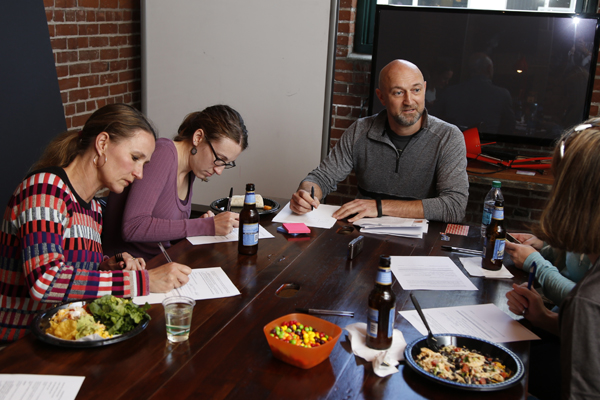
Subscription Offers: Become a good retailer by offering some discounts.
At that point, we then pivoted from thinking about a running subscription to a kid subscription. This was back in 2016. We put together a website called Kicks Back. It was very rough. You could only pick one shoe, which was the Roshe at the time. It had six colors but only one shoe. We got 50 customers who came in and they paid $20 a month for three months. It showed that there was a demand for this. What tells me that this was working is the ad we used to show on Google. It’s a simple Google ad, “Kids who grow fast wreck shoes.” Everybody clicked on that because it’s the truth. It doesn’t matter how much you try to restrict your kids from jumping in that puddle or running in the mud, they do it. That was how it began.
There are many places I want to take this. I need to stay focused. You got the green light to look at this subscription model as one of the many different tactics for exponential growth over the next period of time. Your first hypothesis was running shoes. Serious runners need to replace their shoes every X miles and you could make that easier for them. You got the feedback from those runners who said, “That’s interesting. What’s interesting is my kids who both beat on the shoes and also outgrow them.” There are two reasons that they need shoes rather than just the, “I beat on the shoes with my running.” You decided to pivot. One of the challenges that a lot of entrepreneurs face is when do you decide that it’s time to pivot? Did you define in advance, “We’re going to look for this milestone or this feedback. Otherwise, we’re going to go back to the drawing board?” Did you say in the moment, “It feels like there’s a groundswell for kids’ shoes. We’ve got to pivot?”
It’s probably useful to describe what was going on behind the scenes structurally as far as Nike as we were making it possible to do this. Mark, having challenged his leadership team around, “Let’s look for new innovations that aren’t necessarily product innovations.” Nike is amazing at product innovations, new shoes, new shirts and new technologies. This was thinking in terms of business model innovation. We created an incubator that is now called Valiant Labs. That was about using the lean innovation methodology to test whether these things could fly.
There were some interesting principles that we had early on. I was the first entrepreneur resident to join this new unit as part of the advanced innovation. We were guided by what it would be if you were at Techstars or whatever, except the VCs were internal. They were the Nike leadership team. They effectively were the VCs. Five of the executive leadership team sat every 90 days and we would present to them, “Here’s what we’ve learned in the last 90 days. Here’s what we intend to learn in the next 90 days.”
Slowly, over time, we were increasing the investment when we were reducing the risk. We’re de-risking any business model innovation for Nike. Once you have that process embedded, the Nike leadership team feels confident in trusting the entrepreneurs to come and say, “I had spoken to 100 runners and those that were parents say we should pivot to having a kid’s program. I’d like to pursue that.” They would then say yes. It wasn’t me on my own in isolation running around and making these pivots. It was a team game within the organization.
What’s interesting to me is that the team that you were presenting to was almost serving as a board, like what a startup would have as a board are the investors, but they were actually Nike executives. They weren’t just thinking, “Is this going to make money on its own?” Also, somewhere in there was, “Does this make sense for the bigger organization?” They kept you off to the side. I talk in my books about this idea that when you’re starting up inside a large organization, you’re often off to the side, maybe with different rules, expectations, lower resources. As you prove yourself, the organization is more confident about moving you towards the center, giving you the ability to use the brand machine, giving you access to manufacturing, giving you access to the customer base, giving you more money, all of those things.
Continue proving yourself to the organization you’re working with, and you’ll eventually move towards its center. Share on XThere was brilliant serendipity at that time because Shoe Dog, Phil Knight’s book on the history of Nike, has just been released and everyone was reading it. It told the story of how Nike was a startup. The nine years of pain that he had to go through before it became the Nike that’s more familiar to people now. Mark Parker who was with Phil, he was one of the first employees of the company. When he first came down to this little warehouse that we hired in downtown Portland and walked in and saw the shoe boxes lying all over the floor, he was like, “This is what Nike was like 25 years ago. You’re essentially building another Nike.”
That principle that we could be off the grid as it were became a model for the whole incubator. All the different startups that have come through this process we often referred to EasyKicks was the snowplow. We were trying out these process models, giving it a go, making a ton of mistakes, and then sharing that failure. We always used to say, “The only true failure is not sharing and making the same mistake twice.” What we were trying to do was make all the first mistakes so that the other startups wouldn’t have to.
Making the first mistakes with much lower stakes. You were EasyKicks. Keep sharing the story. You decided to go from running shoes for adults to children’s shoes. You tried the Kicks Back to see if there was any interest. That evolved into EasyKicks, which I featured in The Forever Transaction as an interesting example of launching and then moving to the scaling phase. Can you walk me through what happened during the EasyKicks phase?
Some of our readers might be wondering, “Why are all these changing of names? Why weren’t they using the Nike name?” Another core principle of what we were trying to do was to use what we call burner brands. There are two reasons. One is we wanted clean data. People will do things for Nike, for the Swoosh that perhaps they might not do if it was an unknown brand. The second is we didn’t want to signal to the market that this is an area we were moving into or thinking about. It was mysterious. On my LinkedIn, I’ve disappeared from Nike.
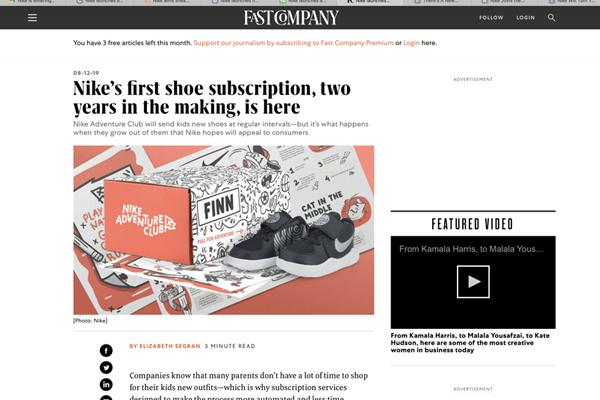
Subscription Offers: Bring in practices that you’ve already done to build or evolve a subscription offer successfully.
When I was writing my book, I was looking for good examples of intrapreneurship. I was also looking for good examples of subscription eCommerce. I found EasyKicks and I thought, “This must be good because this guy who used to be at Nike is running it. I bet he has a lot of relationships over at Nike.” I chased you down. I tried to LinkedIn with you. I tried to find a way to connect. When I finally connected with you, I was surprised to learn that you hadn’t left Nike, but you were working off in the corner in an entrepreneurial fashion. You did a good job. This is an interesting point for people reading, especially if you’re in a big organization. One of the early questions is, what should the early relationship be between the innovation and the larger organization? There’s always a trade-off there.
Our belief was and what’s worked well is that you start small and you’re completely independent. You’re effectively a completely separate startup. We were using Shopify as our eCommerce system. Stripe is the payment processor. We’re funded by Nike but operating as a small team outside of Nike. Interestingly, quite a lot of our employees within EasyKicks were not Nike employees. They were contracted directly so that there was the independence of thinking as well as doing. The reason it was called Kicks Back because, at that time, my mindset was this idea of sustainability. It’s about getting shoes back.
What happened was when we started to talk more and more with parents, you realize that this whole hassle of shopping for kids’ shoes was an enormous problem. Every parent has it, from toddler through teenagers as their feet size settles down. That’s a universal thing. The size of the price and the total addressable market is vast and never-ending because people keep having kids. We started to think about, “What are we solving for here?” We realize it’s about EasyKicks, how to get kicks easily? It’s a convenience story rather than a sustainability story. We kept the sustainability element in there by allowing parents to send back shoes at the end of life, but it didn’t become the main driver. That was an important pivot for us as we launched EasyKicks. The scale of this is still hundreds of customers rather than thousands or tens of thousands.
Around Christmas time 2016, 2017, I’ll never forget, we were starting to reach a plateau on our growth. I was like, “There are many parents out there. What’s going on?” We did an important exercise, which was we interview ten customers who signed up. We had managed to trace ten people who’ve given us their email addresses but hadn’t signed up and we find out why not. The answer came back around trust. They used this phrase, “It’s too good to be true.” I was like, “What do you mean it’s too good to be true? Surely, that’s a reason to sign up.” They were like, “I couldn’t believe that this company called EasyKicks could have these brilliant Nike shoes at $20 a month.” We were trying to do discounting to reduce the numbers. They were like, “This can’t be for real.” The people who had signed up would say, “I didn’t believe I was going to get sent a pair of real Nikes. I thought it would be fake.” When they did, they were excited because they were telling their friends, which were helping along the way.
At that point, we then added, “With Nike,” so EasyKicks with Nike. On the website, we said, “Nike is our official supplier of shoes.” We’re not trying to indicate that they own the brand but just a partner. At that point, the growth exploded. We’ve jumped from about 300 customers to 3,000 in the space of one summer, summer of 2017. At that point, we started to say, “We do have something here.” We used to say, “We have it there there. These are there there.” It’s getting closer to product-market fit. At that point, Nike started to get interested. They came back with some good challenging question which is, “How do we make it profitable?” People who are familiar with MoviePass will recognize that it was this $20 a month unlimited swaps. Parents originally told us that their kids need about four shoes a year. The average shoe price was $60. Over the course of three months, that’s $20 a month.
What happened was as people received the boxes and got excited by them, they started to swap faster and faster. We started to see this pattern emerge. About a third of our customers were swapping monthly. A third was swapping every 60 days. A third of swapping every 90 days. It made us realize that we had to pivot the pricing plans to accommodate this almost time-based approach. That allowed us to say, “$20 a month will buy you four shoes a year. $30 a month will buy you six shoes a year.” If you want to get a new shoe every month for your kid, which 10% of our customers did, we said that it was $50 a month. We gave them a little discount because they were going to give us $600 a month, which is awesome from a lifetime value point of view. What we started to realize looking at the KPIs is that people are sticking with us on average for about sixteen months. The LTV on that is nearly $1,000 for some of our most expensive customers. It’s good.
Being generous back is an important part of how you retain people. Share on XI want to break this down. $600 a year is fantastic for that 10% group. They almost have a different objective though. When I think about a forever promise, your initial forever promise was never have kids outgrow their shoes, never have kids destroy their shoes, and not have another pair ready to go. For some of these parents, there was this other promise that they wanted, which was around maybe fashion, variety or status in some other way. I feel like this is another one of those big moments of inflection for a lot of organizations. At what point do you decide that you need to have multiple offers for different segments?
You’ve pointed out something brilliant, Robbie. One of the other key things I would say to any corporate innovator out there is constantly be looking at your personas. Who are the early adopters? What’s their profile? What problem are you solving for them? As you pointed out, originally, it was a convenience space business. At $20 a month to get four shoes a year was plenty enough. What had happened was people had seen and got excited about the idea of having more for their kids. What was interesting when we looked at that persona is that the majority of the people that were in that 10% bracket were men and they were sneakerheads. As adults, they are buying shoes for themselves monthly. They wanted their kids to come along on that journey too. There’s quite a big phenomenon around mini-me. The adults and the kids have matching shoes going on.
You could almost say there was a completely second business opportunity. One of the other things they asked us was, “Can we have more Jordans?” More of what they call the high heat sneaker. You could almost have a premium tier, which are shoes that might be retailing at $150 instead of $60 and having a plan for that. We didn’t pursue that because we felt that the larger market opportunity was in the general convenience sector. Having alternative plans also not just solves problems for different audiences but also helps reference.
There was this crazy phrase that we heard, this idea of dub, “$20, it’s a dub.” It’s a small amount of money that every month, you’d almost don’t think about. Having a $50 a month plan made you realize, “This is reasonably priced.” People would often come back and say it’s affordable. $20 a month, you’re paying the same price for the shoes if you would pay $60. The fact that it’s broken down $20, $20, $20, makes it seem affordable. It’s more perceptual than reality. You learn these things along the way. They start to then inform you how you lock those insights into the actual plan itself. We always have this phrase, “We’re always in vita.” We’re always evolving. That’s not the final solution. You never get to that final solution. You’re always evolving and adding value along the way.
I love that you said that because I wanted to focus this episode around getting to MVP, finding product-market fit. What is interesting is that you continued to raise the bar on what product-market fit looked like, layering in more value over time. I think about this a lot. You said that this innovation wasn’t so much about the innovation Nike usually did, which was innovating around shirts or shoes, some technical innovation. This was about the innovation of a business model. A key element of a subscription-based business model is that the offering has to improve all the time. Not just as a headline benefit that is what gets someone to sign up but for the people that are already there, it has to keep improving. I’d love it if you continue us on this journey. You’re still EasyKicks. You’re learning about your customers. You’ve expanded the number of tiers. You’ve maybe limited what certain tiers get to manage for profitability. What was the next phase for you?
The keyword is all about retention. As you know, subscription lovers are obsessed with loyalty and retention. That’s the key KPI that you’re searching for along the way. Luckily, we brought on board a lady named Dominique Shortell. She became what we dubbed our Chief Happiness Officer. She and her team were to try and understand how do we improve retention. She developed this brilliant formula that we’ve started to use, which is retention is a factor of three things. Firstly, great acquisition. For example, people we brought on if we’ve done some discounting weren’t always the best retainers, they weren’t as loyal.
The second element is around frictionless service. Do all the things that are expected of you well. The packages should turn up on time. The boxes should be well packaged. The shoes should be clean, etc. It should be easy to order. The third element is around what causes surprise and delight. The customer, when they receive the box or when they’re having an experience or customer service interaction, there’s a little magic involved that makes them feel good and special. One of the values that you and I have talked about before is around generosity. They’re giving you an awful lot as part of a relationship. Being generous back is an important part of how you retain people and how they stick.
We were still as EasyKicks. Dominique got two daughters. One of the things Dominique did she’s putting in some activities for kids to do with their shoes. We sent it out. We put together a cartoonish, little stapled-together thing. The reaction was visceral. The moms loved it. The kids loved it. It gave them a reason to feel like this was part of something bigger than just a business service but more like a club. That helped us as we started to think about transitioning from EasyKicks into the core itself. A huge part of the journey is the moment where we’ve learned enough in our burner brand to say, “We feel confident now that Nike effectively would acquire us or transition us into the core itself,” which was then the transition from EasyKicks to Nike Adventure Club.
The reason why we changed the name is often, people would say, “EasyKicks is such a great name. Why not Nike EasyKicks?” Dominique helped us here. The thing that we learned was this wonderful phrase we used which is, “We acquire the mom but we retain the kid.” It’s the kid pestering mom to go, “I can’t wait for my next box to come.” One of the videos that one of the moms sent was wonderful. It’s a young boy at the door and the FedEx van was pulling up. She sets a little handheld video and the boy was going, “The shoe man is here.” They were excited to get their boxes with the cool kicks in them. What we added was then the adventure packs. That helped us get the clue to where we wanted to take the name. A kid would have a t-shirt on that said, “Nike Adventure Club.” They probably wouldn’t have a t-shirt on that said, “Nike EasyKicks.” It’s not cool for kids. That was the reason why we did the transition to the name.
There were a couple of things that are important for people to take away. That Chief Happiness Officer retention formula is great. A great acquisition plus frictionless service plus surprise and delight is a great way to think about how to retain people. Also, these headline benefits versus engagement benefits are important. It’s interesting how this came to be in your journey. The acquisition was all about how do we attract the mom. Particularly, it seems like it was around pricing. $20 a month seemed too good to be true and then seemed like a good deal. Smoothing out the purchasing curve appeal to the moms. You then layered in the engagement benefit for the kids with the adventure packs. That balancing of acquisition benefits and engagement retention benefits are important. Also, it’s interesting that that was the moment or that was one of the key things that pushed you over the edge into being more officially part of Nike and using that new brand.
I had a question for you. A couple of times, you’ve talked about the sneakerhead parents. Originally, it was a running club idea that became a kid’s club idea. Did you ever think about indirect benefits to Nike, especially as you’re making this transition into being more officially a part of Nike? A lot of organizations invest in subscriptions because they see it. Maybe there’s direct revenue but it’s also a relationship-building tool. It’s also a relationship expanding tool, reaching new markets. The real payoff isn’t going to come from the subscription fees. It’s going to come from dad buying shoes to keep up with his kid or buying clothes to go with your running shoes because you’re already getting everything from Nike. How did that play in, especially with your board of advisors?
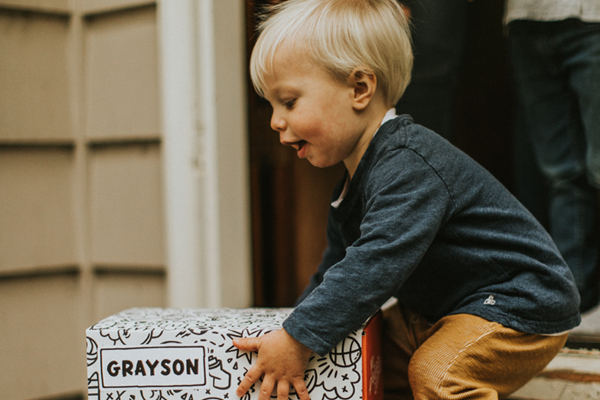
Subscription Offers: Sometimes, you need to try different techniques to solve your problems and then validate.
I’m sure a lot of other competitors will have this too. If I take Nike as an example, there were different groups within Nike that we would interact with. For example, Nike Kids. That team itself was interested in the financial benefits. From two years old, potentially, these kids are never wearing any other shoe except Nike. You’re building a brand-loyal lover from such a young age that you’re going to be reaping the benefits of that for decades. That was an important part for them around that. That’s why they were very much fans of the whole adventure pack stuff. You’re teaching also kids to move and getting them active. Playing is such an important thing as well. COVID only exacerbated that enormously.
It wasn’t just about the financial side of things. When we were presenting to the executive leadership team and they’re like, “Tell me about lifetime value.” One of the big comparisons that were interesting to make was a typical subscriber is different from a transactor? For example, parents, generally, will be buying four shoes a year. If Nike has a 50% market share, it’s getting half of those sales. With Nike Adventure Club, you’re getting all of those sales. That was a powerful KPI that people got excited about.
The other thing is the knock-on effects of like, “If I have a relationship with this person, then communication is much greater.” We had 34% open rates on emails for sending them communication and say, “Mom, would you like something? Do you want socks with that?” What I love about this whole area of membership and subscriptions is around the relationship. Your generosity will beget generosity from the customer as well. There are all these knock-on benefits that aren’t related to gross margin or EBIT, for example.
Talking about also the financial, short and long–term benefit, and also the more mission-driven benefits around building trust and alignment around the impact on the world or impact on your life, we started talking about sustainability. Did sustainability continue to weave its way through or was that something that you left to the side?
Find out the problems within your business by talking with your customers. Share on XWe kept it going all the way through, not only because we care about making a positive impact, but because parents wanted it. There was a problem that needed to be solved. The best way I can describe it is by describing the times that I used to go and visit parents in their homes. One of the things I would often say towards the end of our interviews was, “Can I have a look in your closet? Can I have a look at your garage?” People would open the closet and out would pour shoes and all kinds of things. I was looking at a house in New Jersey and a lady had two sons. I said, “You’ve got a little girl’s shoe here.” She said, “That’s my daughter’s. She’s at college.” I was like, “You’ve had this one little girl’s shoe. She’s like, “I know. I keep it as goodwill.” There was guilt building up, which is, “I don’t know what to do with all these old shoes.” The great thing about Nike Grind is that we can take any shoe and grind it up.
What we did is we pivot from asking people to return every single shoe as they bought a new shoe. It used to be a one-in-one out model, which was hard for the customer to organize but also expensive for us from a shipping point of view. We send them out a big bag and we do a shoe drive twice a year. They would put this bag in the closet, fill it all with the old shoes, zip it up and send it back to us around Earth Day and around Thanksgiving, two times a year that we did the shoe drives. It was still there and much more convenient for parents to do it like that.
The other element as well is when you’re listening to the customer, you’re responding to that. For example, with the social justice issues around George Floyd, one of the things that we did is surprise and delight. We send some communication around how to talk to your kids about race. The majority of the reaction was positive. There were people who complained about it. It was like, “You’ve got to make a stand.” The majority of the customers reacted positively to that. When I think of sustainability, it might not always be environmental sustainability but also social justice and community impact as well. That comes from being responsive, listening to the customer, understanding what their needs are, and then having the bravery to go, “Let’s give it a go. Let’s try it.” That always has been our approach, which is necessary for subscriptions and membership.
Always being in beta mode means that you never have all the answers. I know that one of the things that you did in this process is you reached out to other intrapreneurs, other people that were building entrepreneurial new businesses inside larger brands. First of all, how was that process of reaching out to people? Second of all, what did you learn from that effort? I often encourage my clients to reach out to other similar companies with similar challenges but they rarely do it, to be honest.
I am obsessed about this, Robbie. One of the joys of LinkedIn that’s good is that I would often go into LinkedIn and search retention or membership or things like that, and see what pops up in people’s names. I would reach out to them and say “Hi, my name is Dave. I’m trying to build this subscription business for kids. I’d love to talk to you. Do you have 30 minutes?” The majority of people responded positively. They want to talk about what they’re doing too. They want to learn from each other.
I try to do five conversations like that every month, 15 to 30-minute conversations. People were generous. If you’re reading, all my friends out there on LinkedIn, thank you. People are generous. That’s how I met Matt from Vinyl Me, Please. It was through one of those conversations. He was like, “What’s your retention numbers?” These comparisons. We had this interesting little group conversation going on around, “Is it debit card or credit cards?” All these little insights about how people pay for subscriptions, which are useful for you. Other folks are doing this in other corporates. One of the big ones that I talk a lot about that everyone goes to is The Innovator’s Dilemma. We were working on Shopify and Stripe but Nike’s core at tech stack is massive enterprise scale. Having to bridge that gap is a huge effort. Nike’s going through a lot of tech improvements that are going to help it get ready to support the membership business models going forward.
Great book, by the way, The Innovator’s Dilemma by Clayton Christensen, for those of you who are looking for something juicy to read, thinking about subscription memberships, new businesses. You’re moving on from Nike after thirteen years. You and Matt Fiedler, who was a guest from Vinyl Me, Please, are starting a new organization called UNBRKBLE. Can you tell me about the problem that you’re trying to solve with UNBRKBLE?
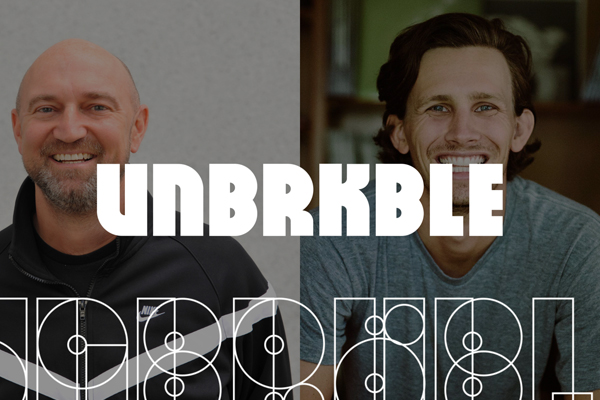
Subscription Offers: If you can build a brand-loyal lover from a young age, you will reap the benefits of that for decades.
The simple answer is, how do you go out and build or evolve a subscription business that is going to be successful? We’re bringing the practices that we’ve done. Matt’s done them in the wild and I’ve done them within the corporate innovation world. We have the practical expertise of having done it. My phrase is “Get things done.” It’s to help practitioners get things done in their organizations or within their startup to make it work. We use the same principles that I’ve described before, which is you might start small, you do some exploration stuff, might be a lot of tests. Talking with people about what’s the problem that needs to be solved. Trying to identify what that problem is. You might build a rough solution or you take what your current solution is and try some different techniques out and different options and then validate. You’re trying to ask questions, “Am I solving that problem? Am I doing it in a way where a customer is going to be satisfied and therefore want to be in a relationship that was going to be mutually financially beneficial for the company and solving their problem from a customer’s point of view?”
What advice do you have for people in that situation who are getting started or trying to build their business model and get things done? What advice do you have for these subscription entrepreneurs, intrapreneurs, eCommerce practitioners? If you could give them one piece of advice, what would it be?
One piece of advice is to talk to people. Talk to the customer and find out what their problem is. One thing that I’ve been most surprised by is I’ll go and talk to another corporate event and say, “What are the customers saying?” They go, “We haven’t done that yet.” The answer comes not from talking to other people in your organization. It comes from talking to an end consumer. Eventually, when you’ve talked to them enough and you found a potential solution, go test that again with the customers.
Talk to your customer is great wisdom. This has been such a good interview. We could go on for a lot longer. I wanted to do a speed round. Are you game?
Yes.
The first subscription you ever had.
Your favorite subscription.
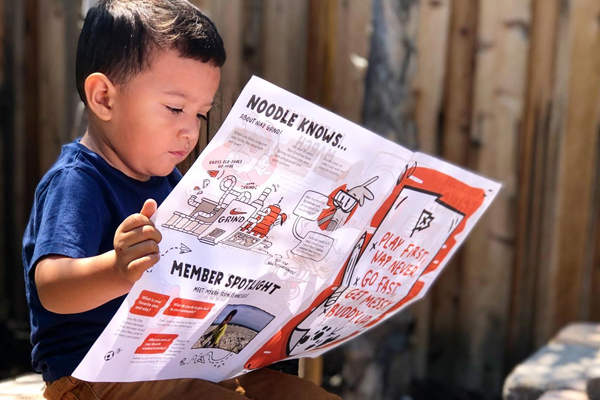
Your favorite Nike shoes.
Your superpower.
Creativity.
A time when you felt like a member like you belonged?
Probably with Soho House. I was one of those founding members of Soho House. That was special.
Thank you so much, Dave, for being a guest on the show and for sharing all of your experiences and advice with our Subscription Stories audience. It was a real pleasure to have you on.
Thank you, Robbie. I enjoyed it.
—
That was Dave Cobban. For more about Dave and UNBRKBLE, go to UNBKRBLE.com. If you liked what you learned, please go over to Apple Podcasts or Apple iTunes and leave a review. Mention this episode if you especially enjoyed it. We read all the reviews because we want your feedback. Thank you for your support and thanks for reading Subscription Stories.
Important Links:
- Dave Cobban, Founding Partner, UNBRKBLE
- Nike Adventure Club
- UNBRKBLE
- Nike Grind
- Buy Shoe Dog on Amazon
- The Forever Transaction
- Vinyl Me, Please
- Buy The Innovator’s Dilemma on Amazon
- Subscription Stories Episode with Matt Fiedler – Past episode
- Netflix
- Disney+
- Air Force 1s
- Apple Podcasts – Subscription Stories
About Dave Cobban
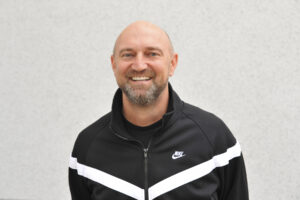 As Nike’s first Entrepreneur-In-Residence, Dave and his team used the Lean Startup methodology to build an innovation pipeline and validate whether service and membership-based innovations could 1) solve meaningful consumer problems, 2) be built and managed feasibly, and 3) be profitable within the constraints of Nike’s long-term financial model.
As Nike’s first Entrepreneur-In-Residence, Dave and his team used the Lean Startup methodology to build an innovation pipeline and validate whether service and membership-based innovations could 1) solve meaningful consumer problems, 2) be built and managed feasibly, and 3) be profitable within the constraints of Nike’s long-term financial model.
Over the course of three years, Dave took a fledgling idea around subscriptions for runners through several pivots into a highly profitable, rapidly growing and extremely sticky adventure club for kids. Having proven the value of product and service subscriptions for Nike, Dave now wants to share that expertise in building successful membership offerings for brands who want to be the Nikes of tomorrow.
Dave has UK, USA and Australian passports, and currently lives in Portland, Oregon w/ his wife, Sue and daughter Jessie (junior at Lincoln High School). Son Harry is on a gap year in Australia learning the value of time and money. Dave is an enthusiastic student of sports, but a master of none. Like Matt, he loves music and DJs under the moniker Bald Eagle and you can find his mixes here.
Love the show? Subscribe, rate, review, and share!


